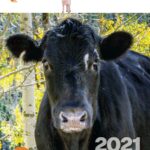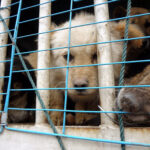What happens when we turn a blind eye to the suffering of our fellow sentient beings? Animal cruelty is an insidious plague that lies hidden in the shadows of our society, yet its impact is profound and far-reaching. From distressing cases of neglect and abuse to the stark realities of industrialized farming, each instance tells a story—a narrative that can potentially awaken our collective conscience and spur change. So, what have you observed in the world of animal cruelty that made your heart ache? This exploration delves into real cases that have galvanized communities, sparked outrage, and ultimately transformed minds regarding this pervasive issue.
In the heart of urban America, a clandestine operation unfolded in a dilapidated warehouse where hundreds of dogs were rescued from appalling conditions. This operation is not an isolated incident. Puppy mills, breeding facilities that prioritize profit over welfare, often keep dogs in squalid conditions, with little regard for their dire needs. The case of an elaborate puppy mill raid in the Midwest led to the rescue of over 300 dogs. They were found in cramped cages, deprived of social interaction and basic veterinary care. Public outrage was palpable. This incident not only drew considerable media attention but also galvanized activists who campaigned relentlessly for stronger regulations against such entities. It led to a cascade of changes in local legislation aimed at curbing puppy mills, demonstrating the power of collective outrage and advocacy.
Across the ocean, the horrific practice of bullfighting continues to incite fervent discussions on animal rights. While some argue for cultural preservation, many others see it as a harrowing spectacle of cruelty. One particularly shocking incident involved a young bull who suffered severe injuries during a traditional fiesta in Spain. Eyewitness accounts described the agony of the animal as it was tormented relentlessly in front of a cheering crowd. This incident lured criticism from international animal rights organizations, thus shining a glaring spotlight on the inhumanity of bullfighting. The ensuing protests from activists not only questioned these traditions but also catalyzed topical debates regarding animal welfare in cultures that revere such events. Could this be the tipping point for change in how societies perceive such practices?
Furthermore, consider the science behind the perceptible shift in societal attitudes toward animal testing. The tragic case of Beagle puppies subjected to grievous experimentation in a laboratory sent shockwaves through the public consciousness. These innocent creatures were subjected to invasive procedures, causing extreme distress and suffering. Documentary footage revealed their plight, turning visceral reactions into a concerted effort to ban such practices. Public outcry ensued, compelling companies and universities to reconsider their methodologies. It instigated a leap toward ethical alternatives and culminated in legislative changes that now mandate transparency and humane practices in scientific research. It is a powerful reminder that awareness and education can lead to systemic transformation.
Rethinking the treatment of farm animals also underscores a monumental shift in awareness and activism over the years. The conditions revealed in animal agriculture facilities frequently reflect a disconcerting reality. For instance, a pervasive case of egregious neglect came to light when undercover footage exposed the living conditions of chickens in a factory farm. The imagery was shocking: overcrowded cages, disease-ridden birds, and rampant suffering. This evidence led to significant public backlash, resulting in prominent campaigns advocating for cruelty-free farming practices. The incident served as a wake-up call to consumers and spurred a movement towards plant-based diets and humane consumption. It ignited discussions about the ethical implications of our dietary choices.
In the digital age, social media has emerged as a formidable ally in the fight against animal cruelty. The viral video of an overworked and malnourished horse being rescued from dangerous conditions is a poignant example. Uploaded by a concerned citizen, it amassed millions of views, touching hearts and inciting action. Activists mobilized to provide the horse with veterinary care and eventually found it a loving home. The tangible upliftment of this animal’s life became a catalyst for many others, raising awareness around the larger issues of neglect and the obligation of communities to care for vulnerable beings. The incident highlights the collective responsibility we hold—not just as observers but as active participants in the welfare of animals around us.
Lastly, the interplay between legislation and public sentiment cannot be understated. Legal cases such as the notorious “PETA vs. SeaWorld” lawsuit have ushered in a whirlwind of dialogue regarding animal captivity and rights. Public fascination with marine life often blinds many to their suffering. However, high-profile cases have exposed the psychological distress endured by orcas and dolphins in marine parks. Depictions of these majestic creatures performing tricks in cramped enclosures have led an enlightened populace to advocate for alternative forms of entertainment. The sea change in public opinion is driving legislative efforts toward regulating or banning the captivity of such animals altogether.
In summary, animal cruelty manifests in myriad forms, each resonating with potent stories that can incite action and change. From the puppy mills hidden in plain sight to the often-ignored horrors of factory farming, every case serves as a stark reminder of our shared responsibility towards all living beings. One can’t help but wonder: how many more stories must we witness before we take collective responsibility to eradicate the scourge of animal cruelty? As we reflect on these real-life instances, it’s clear that each act of awareness and advocacy holds the potential to transform the tide of public opinion and drive meaningful change. Let us be the voice for those who cannot speak, shattering the silence that often encases their suffering.






